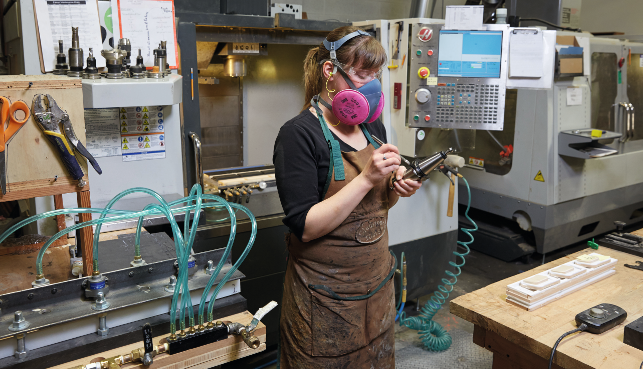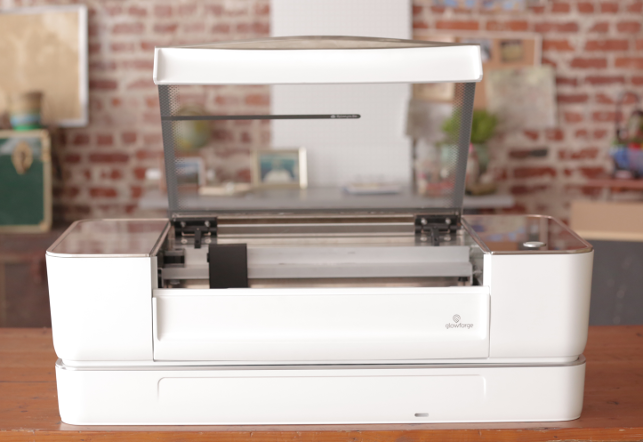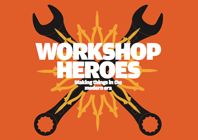
Now, more than ever before, we have the means of prototype production right at our fingertips. Availability is soaring. Costs are plummeting. Welcome to the world of the modern workshop.
While we’re all familiar with how 3D printing has expanded way beyond the R&D departments of large companies, that’s only one small chapter in a much wider story.
Let’s take as an example computer numerically controlled (CNC) machinery: this kind of equipment was, until recent years, the preserve of the industrial shop floor. After all, when you’re looking at over £100,000 in capital expense, that’s not the kind of kit that you want sitting idle, waiting for the next suitable project to roll around. You want it kept busy.
But just as we’ve seen in the 3D printing market, the CNC market has also shifted massively in the last few years. While the cost of production-level CNC machine tools has dropped (the cost of an entry-level Haas machines is a case in point), there’s been a revolution at the desktop level, too.
Ten years ago, if you wanted a smaller form factor CNC machine, then you’d look to vendors such as Roland or Emco, which in many respects focused (and still do) on the education market. But at least these companies sold equipment that was reasonably accessible to designers or engineers for prototyping purposes.
Since then, a number of shifts have happened that have changed the landscape forever. The emergence of the Arduino, an open source platform for experimentation with electronics and machine control, has meant that the know-how that drives the CNC world has suddenly become affordable – and with affordability comes true experimentation.
CNCs are, when broken down into their constituent parts, relatively simple machines. You have three axes of movement: X, Y and Z. If you can shift the X and Y, then move the Z axis up and down, you’ve got the basics of almost every 3D printer, CNC machine or laser cutter in the world. The Arduino and the open source revolution means we now have the brains as well as the mechanical brawn.
And then there’s the software needed to operate such machines. Again, the open source world has given us much. Whether it’s the RepRap project, begun at Bath University, or the folks out there developing the GRBL language for CNC machines, if you can source the parts, then you can cobble together a numerically controlled machine.
Availability of components, too, has changed, although this doesn’t always get the consideration that it should.
Those who have tinkered in the past (and we mean in the dark, pre-Internet era) will be more than familiar with the crippling shyness and embarrassment that was the inevitable result of having to wander up to the counter in an electronics shop and mumble a request for: “Something that does this, this and this.” The alternative was thumbing endlessly through the Maplin catalogue (for our American readers, think Radio Shack, but with better tea and crappier service.)
Today, you can get pretty much anything you want or need online, with vendors ready to dispatch even the most obscure component as soon as you’ve hit that confirm button in PayPal. And companies like SparkFun and Adafruit are taking availability to the next level, supplying not just components, but also useful learning resources.
Getting your hands dirty
The end result has been a blossoming of start-ups that focus on the means of small-scale production. We’re all familiar with the big-name successes of the last few years.
The MakerBot story is perhaps one that has garnered the most attention: a 3D print-focused company, founded by enthusiasts, eventually sold to an industry giant for over half a billion dollars.
That kind of entrepreneurial success story has a tendency to drive other folks to pursue similar dreams.
The good news is that, as designers and engineers, we can take advantage of these changes and bring more prototyping in-house. But why, with outsourcing facilities and service offerings popping up across the globe, would we want to get our hands dirty?
In our conversations with the DEVELOP3D community, we’ve heard it’s down to a few things, so let’s take a look at them.
The one overriding reason is speed – but when it comes to some prototyping techniques, speed isn’t always what it seems.
3D printing, for example, used to be referred to as ‘rapid prototyping’, but that overlooks the irony that many of these systems are anything but rapid. Speed isn’t necessarily about the time it takes to build a part. It can also be about the complete turnaround time: delivery, clean up, and so on.
It can be about the time it takes to build a part, make a decision, tweak the design and try again. And it can also be about having a machine locally, in an office or workshop downstairs – and there’s plenty of evidence that people are expanding or reorganising their workspaces to accommodate these kinds of facilities.
It’s worth bearing in mind, too, that prototypes have a curious lifespan. There are those presentation models that are built to last until a project’s been signed off. But there are others that have much shorter lifespans: they’re taken off the machine, checked (for fit, for function, and often both) and discarded almost immediately.
It might sound counter-intuitive in these days of sophisticated digital design tools and simulation, but it’s still the case that many, many design errors only come to light once a physical part is resting in the designer or engineer’s hands.
Beyond 3D printing and CNC machining
While we’ve talked about 3D printers and CNC machines so far, the tools available to us have expanded beyond these two categories.
Below you’ll see two perfect examples of how the benefits and availability of numerically controlled machines has extended way beyond layers and cutting model board.
As the products we develop become more complex, so do the disciplines involved in developing them. Electronics are now part of almost every product on the market: just ask the parent who has spent Christmas Day trying to locate enough batteries to power kids’ new toys.
As a result, the prototyping of PCB components has become a major area of focus in the last two years. There are those that are developing standard CNC machine tools to allow the fabrication and testing of boards using standard machines (OtherMachine’s OtherMill is an excellent example), while others are taking things to a whole new level.
Take Voltera: it’s just launched the V-One and it’s a desktop marvel. It’ll take your PCB blank, add in the traces you need, handle two-sided boards, even build bridges and reflow solder when you’ve got your components in place. Yes, it’s small – but so are many of the products on which we’re working today.
Alternatively, the Voxel8 machine looks to combine 3D printing with conductive inks and filament, in order to enable the fabrication of components that have circuitry built into them directly.

The Glowforge: a laser cutter, reinvented, with some serious intelligence built in
Laser-cutting magic
Having read this far, you’d be forgiven for thinking that the desktop revolution is just about the fancier end of the spectrum: the 3D printers and the CNCs.
The reality is that this trend is happening across the board. Soon, there will be many more processes available on the desktop or at the very least, ready for the small-scale workshop.
Those that have worked with laser cutters in the past, for example, will know that they’re remarkably fast and produce impressive results. If you’ve only got one machine for building prototypes, a laser cutter is probably your best bet.
Laser cutters are quick, they’re cheap to run and they’re a little bit magical. What they haven’t been, until recently, is cheap to buy.
While the availability of machines from the Far East has seen prices drop dramatically, once you add in the need for water cooling, air filtration and other kit necessary to stop you either starting a fire or poisoning yourself, then the costs still stack up.
Then along came Glowforge earlier this year. With backing and a board of directors that includes some of the Makerbot team, it was clear that laser cutters were going to be the next big thing.
First, the Glowforge’s user experience looks killer. There’s no badly translated Chinese/English software. There’s also an optional air filtration unit. That means that you don’t need the huge extraction facilities typically required for safe use of this type of machines. And the price? Just under $2,000 for the entry-level unit.
But alongside this, there’s also a ton of activity around other processes and tools. We’ll be taking a look at what the folks at Mayku are up to next month, with their desktop vacuum forming and rotomoulding products.
This also brings me onto another subject that I’ve been digging into: taking equipment from other industries and applying them to the desktop fabrication process. It’s often the case that with a little judicious use of eBay and some reading of trade journals, you can find small-scale machines to solve a particular problem.
While we outline smaller machines that are ideal for cleaning up and post-processing SLA parts later on in this issue, these are just a few examples. Elsewhere, we’ve discovered that the dental and jewellery industries are rich sources of marvellous contraptions.
Need a small vacuum-formed part? The chances are that outsourcing that kind of work will be painfully expensive, particularly if you only want a few parts – but we’ve discovered that the dental industry is using a lovely range of vacuum formers, designed for use with gum shield and mouth guards, that cost around £50.
Want to automate the clean-up of your parts? The jewellery industry is using some marvellous barrel-roller devices for polishing. You just throw the parts in with the polishing media and set them going. An hour later, you’ve got a smooth part with a semi-polished finish. Cost? Under £100.
These processes (and the machines that support them) are cost effective because they’re developed for industries away from the eye of the hype-storm – and there’s many more of them out there to discover.
The conclusion that we’ve come to in the last year or so is that there’s a drive out there to adopt internal prototyping facilities at many design and engineering organisations, so our goal this month is to show you where to look for some of the more interesting machines and what you might achieve by using them.

We explore cost-effective machinery and processes ripe for use in prototype production
Default






